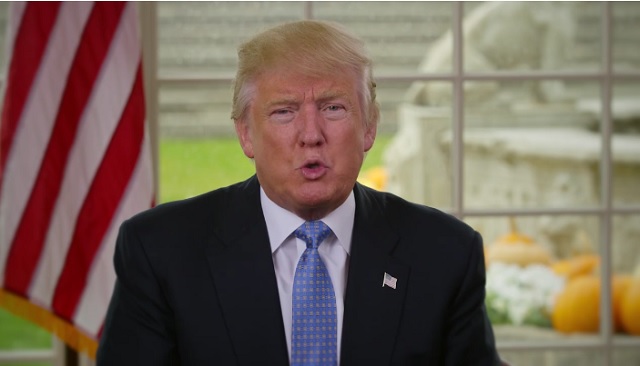
New York, United States | AFP | The Dow hit another milestone Wednesday, ending above 22,000 points for the first time following another round of strong earnings that have overshadowed the lack of progress on President Donald Trump’s agenda.
Trump himself claimed credit for the surge, noting on Twitter Tuesday that the Dow stood only at 18,000 points around Election Day and crowing Wednesday that “we have a lot of things happening that are really great.”
Stock Market could hit all-time high (again) 22,000 today. Was 18,000 only 6 months ago on Election Day. Mainstream media seldom mentions!
— Donald J. Trump (@realDonaldTrump) August 1, 2017
But leading analysts attribute the market’s latest push higher primarily to strong results from blue-chip companies, most recently Apple, by far the biggest gainer in the Dow Wednesday rising 4.7 percent.
Other Dow companies that have soared after in recent weeks on strong earnings reports include Boeing, McDonald’s, Nike and Verizon.
Companies in the S&P 500 earned 9.1 percent more in the second quarter compared with the year-ago period, according to Factset. A key factor for multinationals was the weaker US dollar, which bolstered sales in overseas markets.
“It’s about earnings, coupled with still low interest rates and the Federal Reserve’s ‘gradual’ path towards rate normalization,” said Quincy Krosby, chief market strategist at Prudential Financial.
Investors have been heartened that companies can boost profits at a time when US economic growth is still sluggish and the Trump legislative agenda remains stuck on home base.
Some commentators have expressed concerns that US stocks have become overvalued, but Manulife Asset Management portfolio manager Mike Mattioli said the market could still go higher.
He said some sectors such as telecommunications and utilities are overvalued, while others, such as technology and finance, still have upside.
“These companies are still able to grow, even in an environment like this,” he said. “So why can’t it continue to grind higher?”
“If things do get done in Washington from a positive side, it’s basically gravy on the other side.”
– Whither tax cuts? –
Now that Trump’s health care proposal is apparently dead, the White House and congressional Republicans have begun to shift to tax reform, with some supporters looking for a formal proposal in September.
The promise of tax cuts has always been Wall Street’s greatest priority for Trump and the core reason US stocks surged after the Republican’s upset win in November.
While analysts reject Trump’s breathless claims about this week’s records, they concede that the regulatory restraint under the Republican administration has been a welcome change from the Barack Obama years.
The market has been eager to embrace any sign of progress on taxes, and some pundits view the appointment of John Kelly as Trump’s chief of staff as boosting the odds in favor of tax reform.
Still, analysts point to signs that markets have lowered their expectations for the Trump agenda.
In the aftermath of the election, Wall Street was led by “value” stocks that would benefit from growth measures. But since late January, growth stocks have been the biggest gainers, suggesting the market still anticipates a lackluster economy and low interest rates, Briefing.com analyst Patrick O’Hare said in a note late last month.
“The shift in leadership has been plain to see and it plainly suggests that the stock market isn’t as hopeful as it once was that the assumed pro-growth legislation will come to pass,” O’Hare said.
Currency markets also are cutting the odds on major action in Washington, bidding down the US dollar eight percent so far this year, a shift that gave a boost to many large US companies this quarter.
A note Wednesday from Goldman Sachs said the dollar’s fall highlighted “the transition from post-election hope to reality” and was a key reason for better US corporate earnings.
But JJ Kinahan, chief market strategist at TD Ameritrade, warned that a deeper decline in the dollar could unnerve the market.
A move by the euro above $1.20 would “cause significantly more worry,” Kinahan said, because it would signify a loss of faith that the Fed will continue raising interest rates.
That would suggest “that the economy is starting to slow down,” he added.
 The Independent Uganda: You get the Truth we Pay the Price
The Independent Uganda: You get the Truth we Pay the Price



